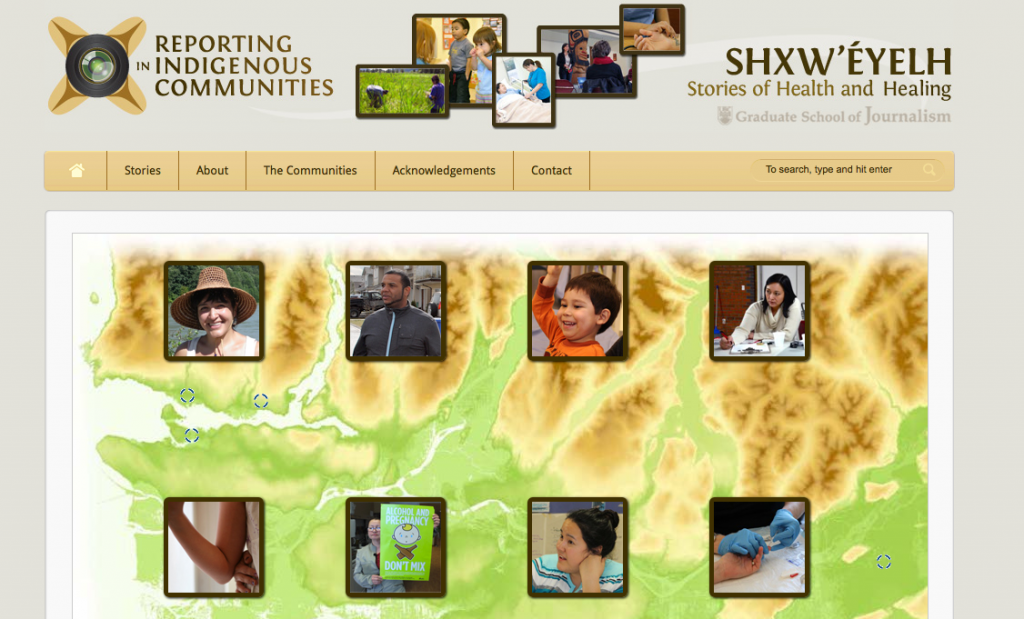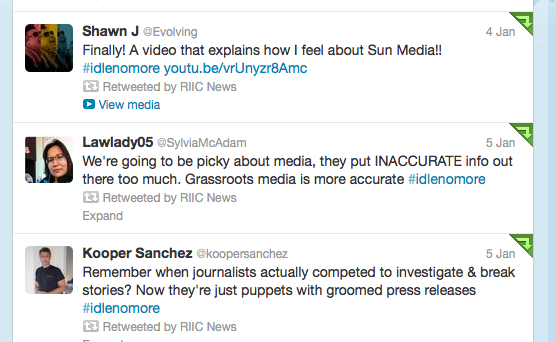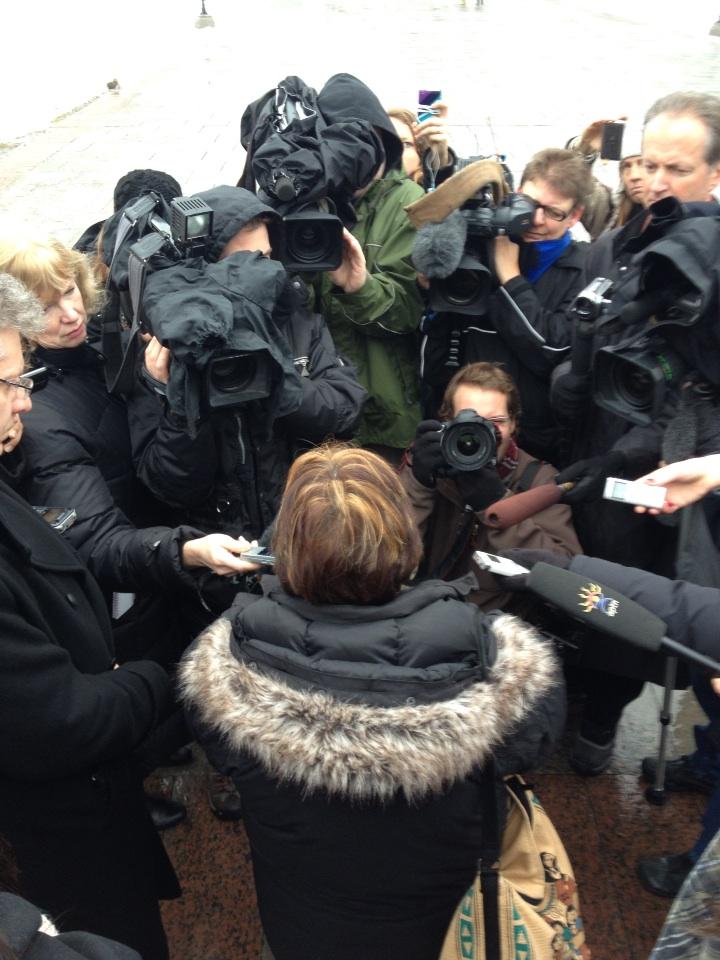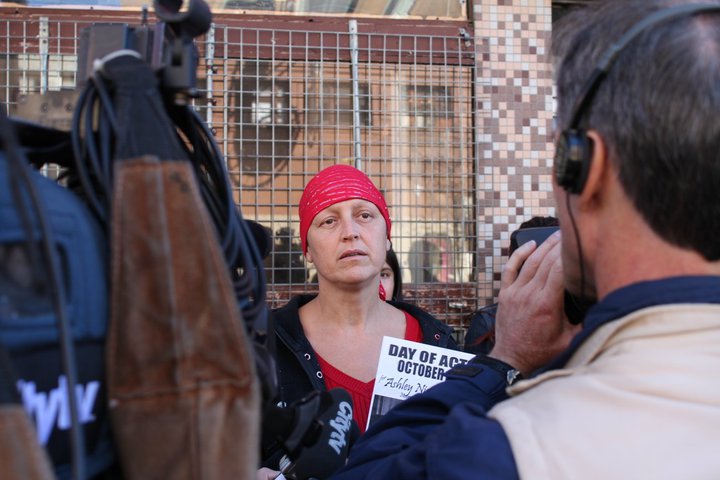07 Jan RIIC @ UBC 2.0
A new school term begins! To mark my second year teaching a course called Reporting in Indigenous Communities (RIIC) at the UBC School of Journalism, I thought I’d share my conversation this past October with Rhiannon Russell, editor of the Ryerson Review of Journalism. Rhiannon was working on an RRJ feature on the portrayal of Aboriginal peoples in the mainstream media (worth emphasizing, this conversation took place prior to #IdleNoMore), and we kicked off the interview talking about the RIIC course.
RR: I read about this new course that you were introducing at UBC – Reporting in Indigenous Communities. How is that going?
DM: It’s going well. I spent a year on a fellowship at Stanford designing the course, amongst other things, and then we launched it in January 2012. We had a great response from the first group of students. We had 15 students in the class. We put together our own website, www.indigenousreporting.com. The students focused on the issue of indigenous health, visiting several different communities in the lower mainland here in British Columbia, central Vancouver. [Ed. note: this year, RIIC students are focusing on the issue of water.] We published in April on our site and then the stories were broadcast on CBC radio, both locally and nationally. Our site was nominated for an online publishing award, which is great, and we’re teaching the course again this year. I’m actually just designing the syllabus as we speak and I’m going to be meeting with this year’s students today.
 RR: How many people are taking it this year?
RR: How many people are taking it this year?
DM: We’ve got 12 at the moment.
RR: So it’s an optional course they can take?
DM: It is, yes.
RR: How important is it, do you think, that students get at least a basic knowledge of Aboriginal issues in school as opposed to once they get out into the newsroom?
DM: It’s critical. I think if you’re going to work in a newsroom in Canada, it would be very unlikely that you won’t encounter First Nations issues in the course of your career, no matter how long your career is. First Nations issues, Aboriginal issues, indigenous issues are important public policy questions in Canada which are debated on a fairly regular basis, and that play out in our newspapers and our newscasts. First Nations people are part of our urban audience as well as our rural audience, so we as journalists encounter them as part of our stories on a fairly regular basis. Unfortunately, there has been a historic distrust that has built up over the years between mainstream media and First Nations people, and that puts a lot of young journalists as they head into the newsrooms, and senior journalists for that matter, into difficult positions when they go out under very extreme deadlines to report on indigenous communities. So I think it’s absolutely critical that we expose journalism students so they have a basic understanding of Aboriginal history, of Aboriginal policy in this country, government policy, and that they also have a cultural appreciation or understanding of indigenous cultures that they can incorporate into their reporting practice, and that they learn all this in a safe setting. That they’re not given a story at 10 o’clock in the morning and expected to have it on the air in three hours. That that they learn this all in a place where they can make some mistakes, they can get some feedback, they can work with the First Nations to understand how to do a better job. So that’s why I think it’s such an important course.
It’s absolutely critical we expose journalism students to a basic understanding of Aboriginal history, of Aboriginal policy in this country, government policy, and that they also have a cultural appreciation or understanding of Indigenous cultures that they can incorporate into their reporting practice
RR: You also launched the Reporting in Indigenous Communities website, and that’s more of a general resource for all journalists, right?
DM: Right. The idea behind it was it’s great to have four months with a small group of students in an academic setting where I can work with them one-on-one and advise them on their stories, all that kind of stuff, but obviously there are lots of working journalists out there already in the field, in the biz, who want some additional insight into working with indigenous communities so that they can make their stories better. So the idea behind www.riic.ca was to provide something that’s open-source, so its available to everybody, it’s free, you can sit down and read it. I’ve been a reporter for 14, 15 years now, so a lot of it is based on my experience both as a TV reporter and as an Ojibway, but also drawing from a number of other resources that look at reporting in indigenous communities and some of the pitfalls and some of the advice that has been given over the years.
RR: When did you launch the site?
DM: RIIC was launched last November. November 2011.
RR: Have you noticed any increase in traffic or greater engagement in social media with the site?
DM: To a certain degree, the guide itself that’s on the site is static. But I’ve tried to make it as alive as I can through social media using Facebook and Twitter, and I’ve gotten good feedback on that. There is a conversation that goes on on the Facebook and Twitter feeds and that’s helpful, with people either commenting on articles that they see that have, in their opinion, been poorly done or conversely, articles that have been well done and trying to engage people in a dialogue about good journalism and bad journalism in indigenous communities.
 RR: In recent years, would you say that you’ve seen coverage improving or even just being more representative?
RR: In recent years, would you say that you’ve seen coverage improving or even just being more representative?
DM: I think so. Without question, there’s more journalism on Aboriginal people. Looking close to home – I work for the CBC, and the CBC has done studies on this –we know that, unfortunately, Aboriginal people are still underrepresented on our network, both as content – Aboriginal people are approximately 4% of the population in Canada, and if you take that 4% as a baseline, we still don’t have 4% content on the CBC network being Aboriginal. I think we should be aiming for more than 4% myself. We still have a ways to go there, and we still have a ways to go, we’re still underrepresented in the newsrooms itself as reporters, and anchors and producers. So, there’s no question that, unfortunately, Aboriginal people are still underrepresented in the mainstream media, but it’s getting better. There’s more and more coverage, and I think that’s a good thing. I see some reporters out there are doing a really good job of representing Aboriginal people as more complex portrayals, and that’s a good thing. However it never ceases to astonish me that the same stereotypes that have been around in Canada for over 100 years keep playing out in our newspapers and our newscasts. I could pull any number of stories over the past couple of weeks and point out [those narratives].
RR: I find that coverage is typically pretty polarized. Either you have the powwows, the chants, the drums or you’ve got poverty, suicide, violence in communities on the other side. What is the danger of that to the public?
DM: The danger is that, unfortunately, a lot of people don’t have exposure to Aboriginal people other than through popular media, whether that’s movies or books or magazines or news media, newspapers and newscasts. So they form their opinion of Aboriginal people based on what they see. The trouble is that if people have an overly romantic notion of Aboriginal people – beads and buckskin, spiritually close to the earth or something like that – or if they have a negative notion of Aboriginal people as victims – poverty-stricken and requiring assistance … then the full picture isn’t being understood or told and that has really key consequences when it comes to the way that Aboriginal people want to live their lives in this country. Aboriginal people want to have a say and have control of their own futures. And at the moment, if the portrayal of them isn’t a full picture in our news media, then that becomes a barrier and a hindrance to them having a say and control of their own future.
RR: Do you notice a difference between broadcast media and print?
DM: That’s a good question. There are lots of differences, and of course the mediums are completely different, and so stories are told differently. There isn’t an immediate difference that jumps to mind. I think that in general, print and radio perhaps have more coverage, simply because … it’s expensive. I’m a TV reporter. It’s expensive to get a crew to First Nations communities which are often isolated. So that becomes a barrier to TV media covering First Nations issues in general, just because the costs are often multiplied, whereas print and radio folk can do interviews over the phone, and never leave the city. That’s more difficult to do on TV. I would say that you’ll find that Aboriginal people are even more underrepresented in TV media. As far as content goes, I don’t know that there’s necessarily an appreciable difference.
RR: In an age where newsrooms are shrinking and deadlines re getting tighter, how can reporters get that context that’s so necessary to telling these stories?
DM:Simply put, news organizations need to recognize that we have done a poor job of covering a key segment of the Canadian population and that we need to do better, and that means putting resources to it. That is a decision that news organizations need to make. It won’t change unless they make that commitment. This isn’t a situation where we can necessarily do more with less. Resources need to be committed. Plain and simple. That said, the Aboriginal communities within our urban centres are still being overlooked, and cities are where the vast majority of mainstream media are concentrated, and they’re still overlooking the stories that are in their very own backyards with regards to indigenous people. So there are things that we can do that don’t necessarily cost tremendous amounts of money to cover Aboriginal communities better that we’re not doing. We’re not making the links to Aboriginal communities that we need to be. We are not hiring Aboriginal staff that would assist us in bringing those perspectives to our newsrooms. We need to be doing those things.
RR: Two issues that I want to look at specifically are Attawapiskat and the hundreds of missing and murdered women in Canada. Can you speak to media coverage of either of these issues and how adequate or appropriate the coverage has been in the mainstream.
DM: Let me talk to Attawapiskat first. There were both good and bad things about the coverage. I saw some very good coverage from Attawapiskat from reporters from my own news organization. For example, Adrienne Arsenault, who was one of the first that was up there, and stayed up there for a considerable length of time and returned to try to bring to Canadians some appreciation of the crisis that that particular community faced.
That said, the community of Attawapiskat declared a state of emergency a month before the mainstream media covered it. It took an enterprising Member of Parliament with a flipcam, who then posted it to social media, the visuals that he captured – it took that for anybody to take notice. I would argue that perhaps it wouldn’t become the news story that it did if it wasn’t for social media. The point being, the story didn’t get on the radar of mainstream media until Canadians told them it should be on their radar.
And unfortunately, the coverage, as good as it was over the course of a couple of weeks, was the same story that we’ve seen on a number of different occasions with other communities that have faced similar crises – whether it’s with their water or their housing or with suicide attempts. And it is the kind of crisis coverage that we are very good at in the mainstream media, but we have not been very good at providing the context, the colonial context, that these crises have emerged in or offering the continuing coverage that’s necessary to see some of these problems solved.
I can point to these types of Attawapiskat news events that have happened many times in the past, and so I think of the community of Kashechewan that went through this, the Innu community in Labrador, Natuashish that went through this, that have seen swarms of media show up for short and intense periods of time who have then moved on and completely forgotten about the issue. I find that frustrating.
RR: And what about the issue of the missing and murdered women?
DM: That’s a tougher one. In general, crime is well-covered in mainstream media. In fact, I would argue there’s a disproportionate amount of crime coverage compared to the crime rates which experts have pointed out are continually dropping. But media and missing and murdered women … it’s a difficult issue. Take the Pickton case, here in Vancouver where I live. It was a team of reporters from the Vancouver Sun who essentially made the links, talking with the women on the street about the fact there was a serial killer who had been spoken about for a number of years, who the police did not appear to be either surveilling or doing anything about. I mean, it was reporters who brought that story to the rest of the world. And the Pickton trail was incredibly well-covered. Many of his victims and of the missing and murdered women across the country are Aboriginal. And there have been some really sensitive and complex portraits by reporters of those women and the challenges they face and the lifestyles they found themselves in. But when you step back, unfortunately … the fact that we choose to give so much print and airwaves to these stories – to look at the killers and the alleged killers – what our audiences could take away is that Aboriginal woman are nothing but prostitutes, victims, and drug users. When in fact there are lots of Aboriginal women who are involved in trying to HELP those prostitutes and drug addicts.
It’s a more complex story. In the book Seeing Red, which I would recommend everybody read, the authors point out that Aboriginal women were historically portrayed as squaws – and that term was used. It has been argued by some academics that that choice to tell as many stories as we have about the serial killers is perpetuating that image of the squaw in contemporary media.
RR: So there’s a good and a bad side to it.
DM: Yeah, but then you’ll also hear, you’ll hear from lots of Aboriginal women’s groups that the media aren’t taking it seriously enough. That they don’t listen to the concerns of Aboriginal people. That those stories aren’t being told until there’s some sensational serial killer story. So I find the treatment of missing and murdered women in the media, it’s complex and I have to confess it’s not something that I’ve studied in great detail. There are others that have, so I’d recommend you talk with them if you were going to go further on that one.







